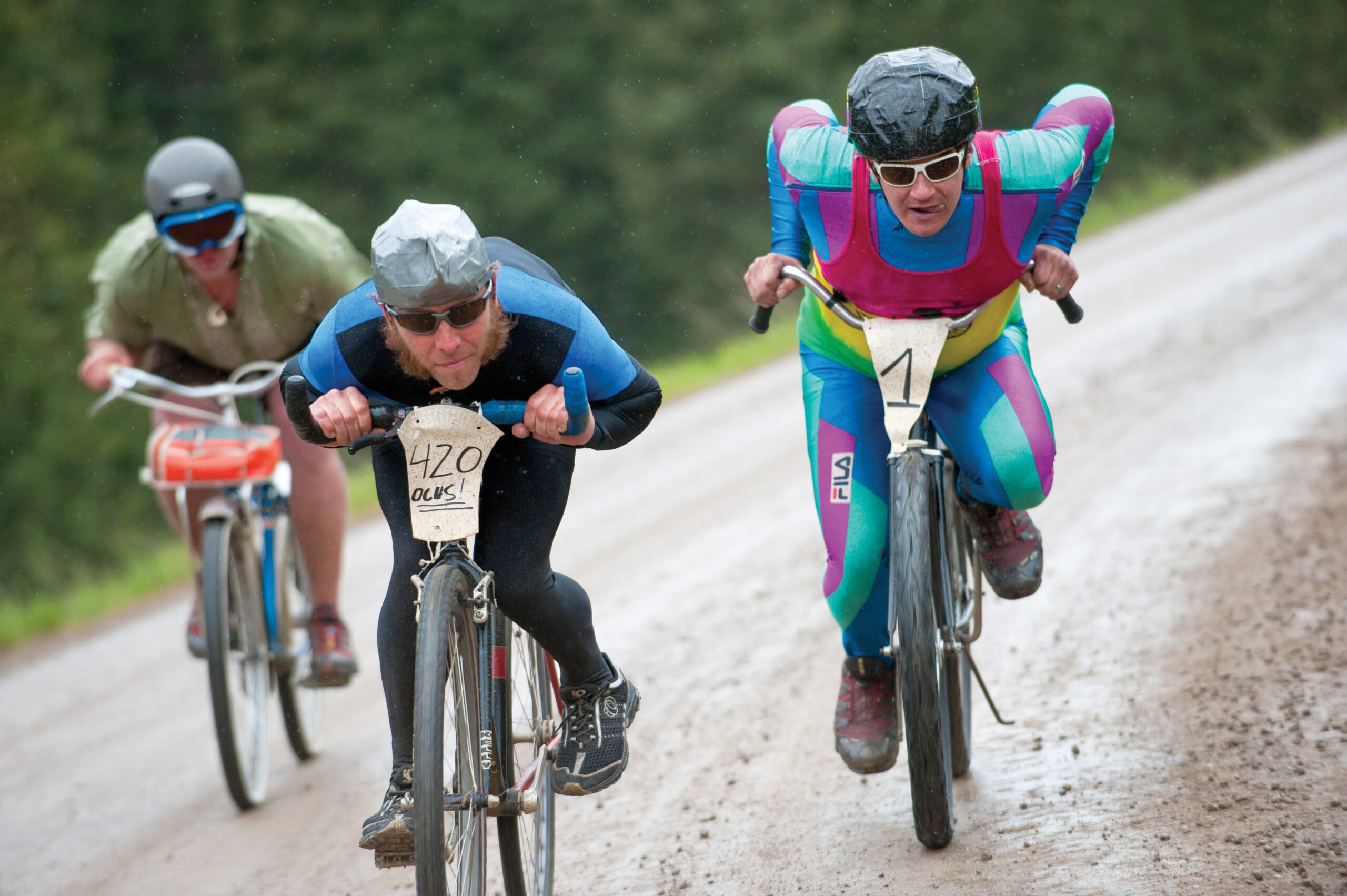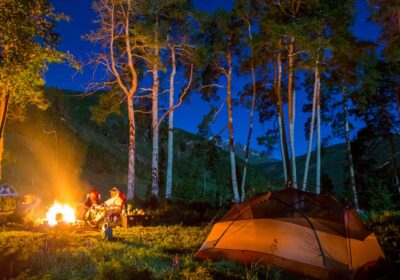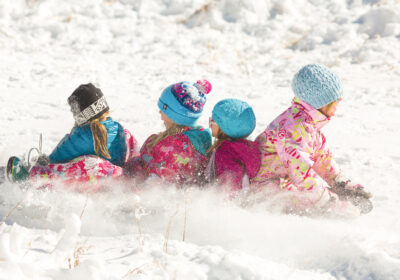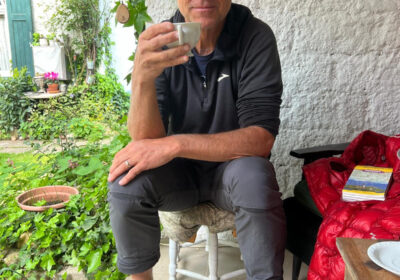
- Stats: 11 0
- Posted: June 19, 2025
- Category: About CB, Events, What To Do
The Chainless: A CB legacy
By Katherine Nettles
Sometime in June each summer, a couple hundred heavily costumed bicyclists arrive at the top of Kebler Pass Road ready for action, competition and a good party. Many have group themed costumes, sometimes a local or national political statement and sometimes an inside joke only recognized by good friends or the local crowd. And after some formal fanfare at exactly 4:20 p.m. they all descend seven miles down Kebler Pass with their bike chains decommissioned, unable to pedal and reliant on their ability to coast, draft and hold their speed.
The Chainless World Championship Bike Race is the epitome of a classic CB event. It is creative, innovative, a bit hairbrained and continuously evolving. And like so many other CB events the competitors range from casual to comical to uber-serious.
The Chainless race has always involved, as its name indicates, coasting down Kebler without the ability to pedal. But the roots of the Chainless go way back to an era before cruiser “townie” bikes were the norm— some say as far back as the 1970s when a gaggle of locals decided to pedal “klunker” bikes that they patched together with various modifications to accommodate dirt roads, makeshift trails and rocky mountain passes. A group took their klunkers up Kebler Pass Road, disconnected their chains and decided to see who could coast down the fastest.
Over time, klunkers morphed into mountain bike designs with increasingly powerful shocks, heftier tire treads and lighter, more versatile frames. But for the Chainless, mountain bikes were replaced by “townie” cruisers. That trend seems to have permanent staying power, perhaps because it allows for the most creative costume engineering.
One of the serious-minded participants of the past, CB local Mark Cram shares his memories of the good, the bad and the gnarly.
“The first time I did it was in the late 1990s on a mountain bike,” he says. He was visiting from Marin County, California, another hotspot for early mountain bike pioneers and their infamous klunker bikes.
Cram says he kept returning to CB and riding on his mountain bike, and it wasn’t until he moved to CB in 2001 and started working at the Alpineer where he had access to townie bikes that he made the switch for the race. “I did it almost every year. And it did become more of a townie sensation,” he recalls.
Back then, the Chainless was part of Fat Tire Bike Week, an annual summer celebration of fat tire mountain biking in the valley that included rides, bike clinics and races sponsored by the Crested Butte/Mt. Crested Butte Chamber of Commerce.
“When I started doing the Chainless it was more of a funny little add-on to Fat Tire Week with maybe 30 to 40 people,” says Cram.
As townie bikes took over as the preferred bikes, the irreverent CB spirit took hold as well and the event morphed into more innovative bike designs, ever more costumery, and ever more people. The Chamber organized shuttles, and at times cracked down on the partying that some participants took over the top.
“Before the shuttles, we would hitch a ride or pedal up,” says Cram.
Riders are encouraged to find creative modifications for their bikes, and since weight lends itself to the forces of gravity, many riders try outfitting their wheels or themselves with heavy yet aerodynamic additions.
“I’d get three burlies at the Gasser,” says Cram of his sandwich-eating race prep to gain a little extra weight. “I would say I was training for the Chainless.”
Some local bike enthusiasts like Rick Murray have made extensive bike modifications over the years including tiki bars, I-beam bikes and a gurney in which, according to legend, Murray pulled his daughter dressed as a scantily clad nurse.
Cram never went for the costumes and the partying, though. He became one of the premiere competitors, vying with a few other CB riders to take the title each year. “I always wanted to have a good drafting battle,” he says, remembering the stiff competition of other CB riders like Roman Kolodziej and Dave Ochs. You’d be trying to draft, and then slingshot past someone else. Roman and I for many years would battle it out, and then we teamed up one year and beat Dave Ochs. Dave was so mad…”
But the race is not just about speed; at least not to everyone. it’s about the art of biking, the art of the townie and the art of the costumed. Managing costumes and speed and balance has always been a major hazard of the race. “One year Ochs made a helmet out of paper mâché to go with this green jacket he had, and he crashed off Kebler while adjusting his outfit,” says Cram. Many others have suffered the same fate.
In fact, Cram’s Chainless career ended in a crash of his own—at least, his uber-competitive Chainless career.
“It was 2013 or 2014, and you always have to watch out at the end of the race where the transition to Old Kebler to New Kebler goes from gravel to asphalt,” says Cram. “I took it way too fast and had a bad crash at that turn. I messed my ankle up badly and spent that whole summer not being able to ride my mountain bike.”
Although Cram decided to ease up on the Chainless after that, there is still a plaque dedicated to him and his first-place trophy on display at the Alpineer. And Cram says he would like to take the approach that so many others do of taking it easy and enjoying the ride. Some Chainless traditions include stopping at every pull off along the pass for a dance party and embrace that losing the race is the way to win.
A few years ago, the Chamber decided to give up the Chainless. It had taken on a life of its own as a somewhat rogue event. For now, that is where it seems to belong.






